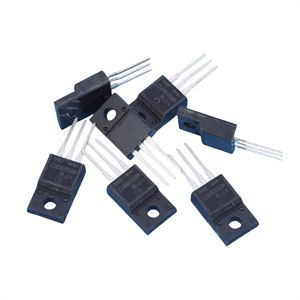Date:2024-10-16 Categories:Product knowledge Hits:347 From:Guangdong Youfeng Microelectronics Co., Ltd
There is only one PN junction inside a conductor diode. If there are two PN junctions inside a device with an N-type semiconductor added next to the P-type semiconductor of the semiconductor diode, and the N-type semiconductor and P-type semiconductor are arranged alternately to form three regions, which are called the emitter region, the base region, and the collector region. The pins led out from the three regions are called the emitter, base, and collector, respectively. The PN junction located at the boundary between the emission region and the base region is called the emission junction; The PN junction located at the boundary between the base region and the collector region is called a collector junction. Devices with this structural characteristic are called transistors.
A transistor, also known as a bipolar junction transistor (BJT), is commonly referred to as a transistor or transistor. Transistors are commonly represented by the letter T in circuits. Due to the mutual influence between the two PN junctions inside the transistor, the transistor exhibits a current amplification function that a single PN junction does not have, opening up new fields of PN junction applications and promoting the development of electronic technology.
The three regions of a transistor are composed of NPN semiconductor material, so this type of transistor is called an NPN transistor;
According to the same principle, PNP type transistors can also be formed.
The difference in symbol between the two types of transistors is only in the direction of the arrow at the emitter junction. Understanding the direction of the arrow represents the flow of current when the emitter junction is forward biased is beneficial for memorizing the symbols of NPN and PNP transistors, and can also distinguish the type of transistor based on the direction of the arrow.

Previous: Classification, Structure, and Principle of MOSFET
Next: Using voltage inspection method to quickly locate fault points in integrated circuits